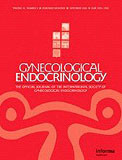Vrbikova J, Zamrazilova H, Sedlackova B, Snajderova M. Gynecol Endocrinol. October 2011, Vol. 27, No. 10, Pages 820–822. IF: 1,461

Abstract
The aim of the presented study is to evaluate metabolic features in adolescents with polycystic ovary syndrome (PCOS) in comparison with age- and BMI-matched subjects. Forty-three adolescents with PCOS according to ESHRE criteria were prospectively evaluated and compared with 48 control subjects. Blood sampling was done in the early follicular phase of menstrual cycle, between 1st and 5th day, for plasma glucose, total and high-density lipoprotein (HDL)-cholesterol, triglycerides, insulin and C peptide. The diagnosis of metabolic syndrome was done according to IDF adolescent criteria. Adolescents with PCOS have increased low-density lipoprotein (LDL)-cholesterol (p < 0.002), decreased HDL-cholesterol (p < 0.0007) and increased C peptide levels (p < 0.02) in comparison with healthy adolescents. Total cholesterol, triglycerides, fasting blood glucose, fasting insulin, HOMA-IR, waist-to-hip ratio, systolic and diastolic blood pressure did not differ between the groups. There was no difference when we compared the prevalence of adolescents with at least one feature of metabolic syndrome between PCOS (17 from 43) and healthy controls (27 from 48). In conclusion, adolescents with PCOS have less favourable blood lipid profiles with higher LDL-cholesterol and lower levels of HDL-cholesterol and are more insulin resistant than their healthy counterparts having higher fasting C peptide levels.
